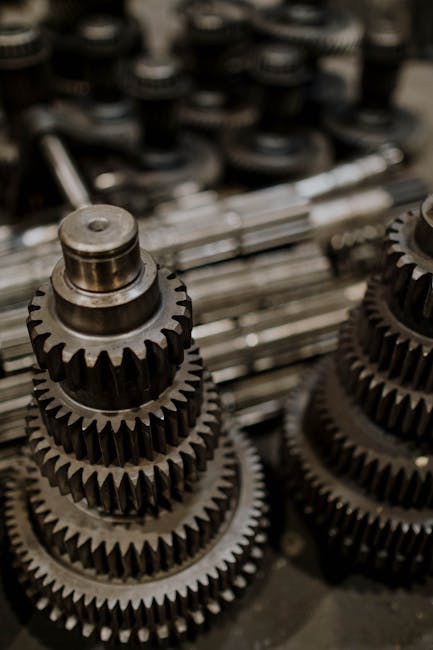 “Manufacturing the Future: The Evolution of Industrial Parts”
“Manufacturing the Future: The Evolution of Industrial Parts”
In today’s fast-paced industrial landscape, the demand for high-quality industrial parts has never been higher. As technology continues to advance and industries become increasingly interconnected, the need for reliable and efficient components has become a top priority. From machinery and equipment to vehicles and infrastructure, industrial parts play a critical role in the production and maintenance of a wide range of products and systems.
One of the most significant challenges facing manufacturers today is the need to balance quality and cost. As companies strive to reduce costs and increase efficiency, they must also ensure that their industrial parts meet the highest standards of quality and performance. This requires a deep understanding of the materials and manufacturing processes used to produce these components, as well as a commitment to continuous improvement and innovation.
In recent years, advances in materials science and manufacturing technology have enabled the development of new and improved industrial parts. For example, the use of advanced materials such as titanium and carbon fiber has enabled the creation of lighter, stronger, and more durable components. Similarly, the adoption of 3D printing and other additive manufacturing techniques has allowed for the production of complex geometries and customized parts that were previously impossible to manufacture.
Another key trend in the industrial parts industry is the increasing importance of sustainability. As companies seek to reduce their environmental impact and meet growing demands for eco-friendly products, the need for sustainable industrial parts has become a major focus. This includes the development of parts made from recycled materials, as well as the use of environmentally friendly manufacturing processes and supply chain practices.
In addition to these trends, the industrial parts industry is also being driven by the growing demand for customization and precision. As industries become increasingly specialized and complex, the need for customized industrial parts that meet specific requirements has become a major priority. This requires manufacturers to be able to produce parts with precise tolerances and customized features, while also ensuring that these parts meet the highest standards of quality and performance.
To meet these demands, manufacturers are turning to advanced technologies such as computer-aided design (CAD) and computer-aided manufacturing (CAM). These technologies enable the creation of complex designs and precise manufacturing processes, allowing manufacturers to produce high-quality industrial parts with greater speed and accuracy.
Another key factor driving the industrial parts industry is the growing importance of data analytics and IoT (Internet of Things) technology. As industries become increasingly connected and data-driven, the need for industrial parts that can collect and transmit data in real-time has become a major focus. This includes the development of sensors and other IoT-enabled components that can monitor and control industrial processes, as well as the use of data analytics to optimize manufacturing processes and improve product performance.
In conclusion, the industrial parts industry is undergoing a significant transformation driven by advances in technology, sustainability, customization, and data analytics. As companies seek to reduce costs, improve efficiency, and meet growing demands for eco-friendly products, the need for high-quality industrial parts has never been higher. By embracing these trends and leveraging advanced technologies and manufacturing processes, manufacturers can ensure that their industrial parts meet the highest standards of quality and performance, while also driving innovation and growth in the industry.
In the future, it is likely that the industrial parts industry will continue to evolve and adapt to changing market demands and technological advancements. As companies seek to stay ahead of the curve and meet growing demands for customization, sustainability, and precision, the need for innovative and high-quality industrial parts will only continue to grow. By embracing these trends and leveraging advanced technologies and manufacturing processes, manufacturers can ensure that their industrial parts meet the highest standards of quality and performance, while also driving innovation and growth in the industry.